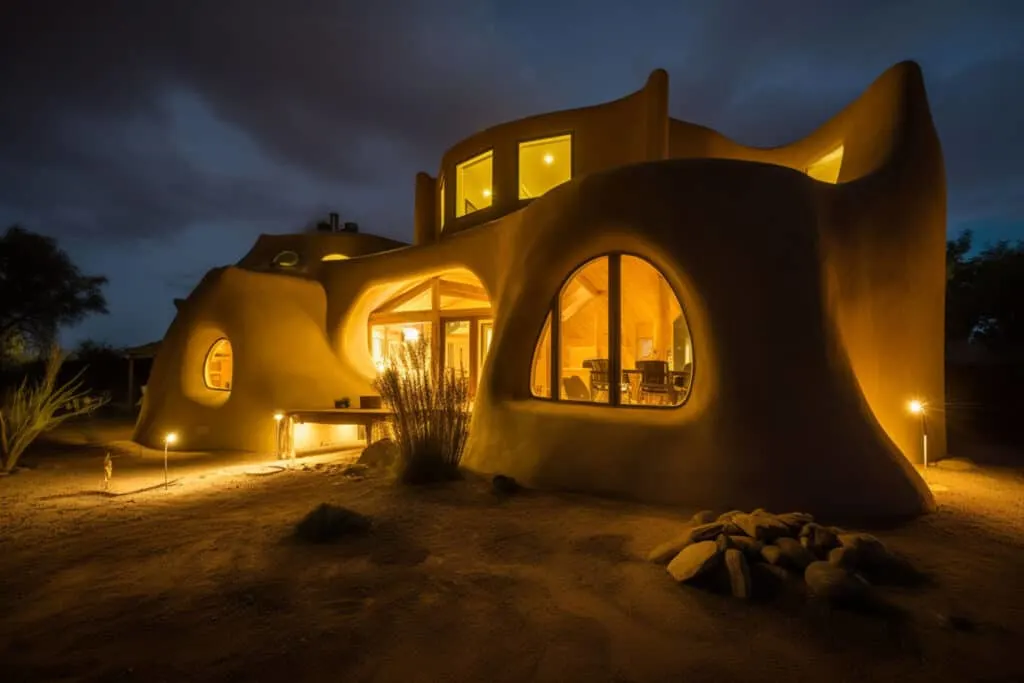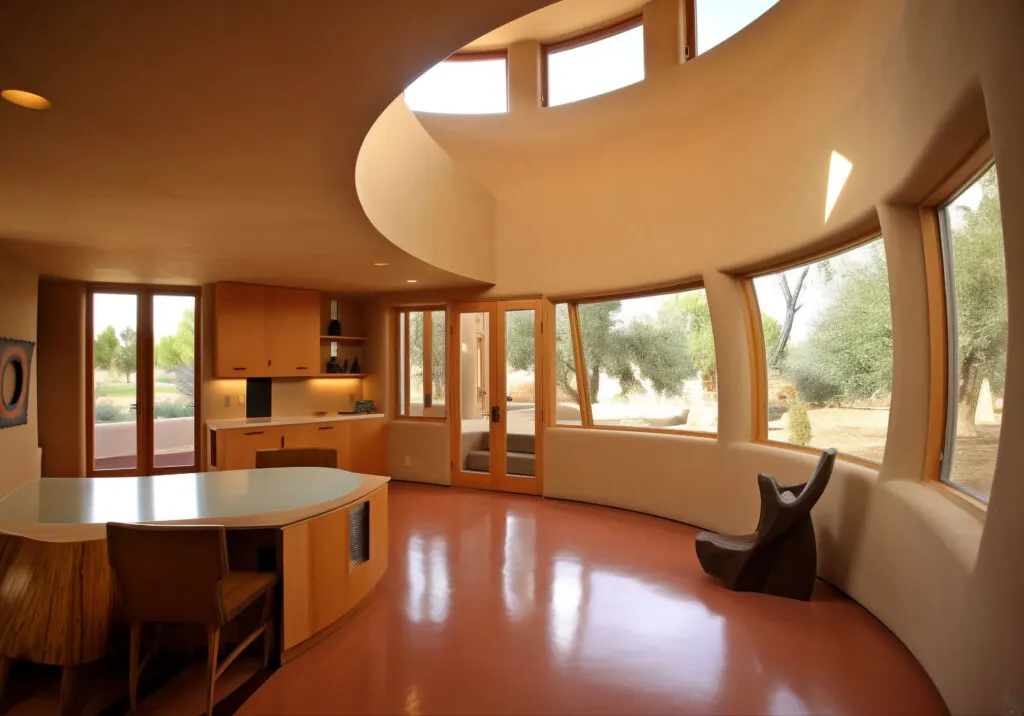Regarding sustainable and eco-friendly building systems, cob and adobe homes are two ancient earthen building techniques that are regaining popularity. Both are made from natural materials, have a unique aesthetic appeal, and offer several benefits in terms of energy efficiency, durability, and affordability.
However, some key differences between these two building styles are essential when considering which is right for your needs. Here we will explore the similarities and differences between cob and adobe homes, including their construction processes, materials used, climate considerations, and more.
What are adobe homes?
Traditional adobe homes are made from sun-dried mud bricks. These homes have been used for thousands of years and are still popular in many regions, including the southwestern United States, Mexico, and South America.
The use of adobe as a building material dates back to ancient civilizations such as the Egyptians, Babylonians, and Persians. However, the Spanish developed the technique of making adobe bricks, which simplified the building process.

Made using organic material, usually a mixture of earth or clay, sand, and straw or other fibrous material, the bricks are left to dry in the sun and used to construct homes, temples, and other structures.
Adobe bricks are generally strong and durable, although their exact strength and durability can vary depending on the quality of the mud used to make the bricks, how well they are dried, and how well they are maintained.

Today, adobe homes are still built using the same basic techniques and materials as in ancient times. In fact, many modern builders and architects are turning to adobe as a sustainable and eco-friendly building material that can help reduce energy consumption and promote sustainable living.
Advantages of adobe homes
There are several advantages to adobe houses, including:
- High thermal mass: Adobe homes are known for their ability to absorb heat, reducing heating and cooling bills. The walls store heat from the sun during the day and slowly release it at night when temperatures cool. This is why these homes are so popular in hot, dry regions.
- Durability: Adobe homes are incredibly durable and can last centuries in dry climates with proper maintenance. The mud bricks used to construct the home are resistant to fire, pests, and weathering.
- Affordability: Building an adobe home can be more affordable than other construction methods, as the mud bricks can be made on-site from locally available materials.
- Sustainability: Adobe homes are a sustainable building option, using natural and renewable materials with a low environmental impact. They also require less energy to heat and cool, reducing the home’s carbon footprint.
- Aesthetics: Adobe homes have a unique and rustic aesthetic appeal with their earthy colors and natural textures. They can be designed in various styles, from traditional to modern, to suit the homeowner’s preferences.

Disadvantages of adobe homes
While there are many advantages to building and living in adobe homes, there are also some disadvantages that should be considered:
- Maintenance: Adobe homes require regular maintenance to keep them in good condition. This includes re-plastering the walls when needed and repairing any cracks that may develop over time.
- Water damage: Like other structures made with earthen building materials, adobe buildings can be susceptible to water damage, particularly in areas with high rainfall or humidity. If the walls become saturated with water, they can weaken and crack.
- Prone to earthquake damage: If not properly reinforced, adobe homes can become unstable during seismic activity due to their weight and the relative instability of adobe bricks under vibrational forces.
- Time-consuming construction: Adobe construction is time-consuming and requires skilled labor, and specialized knowledge. The process includes mixing materials, forming and drying the bricks, building the structure, and plastering the interior and exterior walls.
- Limited availability of materials: The availability of adobe building materials can vary depending on the region. In some areas, materials may be plentiful, while in others it may be difficult to find the right type of mud or sand mixture needed to make the mud bricks.

What are cob homes?
Cob homes are traditional homes made from a natural building material comprised of a mixture of clay, sand, and straw which is sculpted by hand into walls and other structural elements. Cob homes have been around for centuries and used in many different cultures worldwide, including Europe, Africa, and Asia.
The origins of cob construction are difficult to trace, but it is believed to have originated in England in the 13th century. It was a popular building technique for centuries, particularly among the lower classes who could not afford more expensive building materials. Many cob homes from the 16th and 17th centuries still exist in England today.
Today, cob structures are experiencing a resurgence in popularity, particularly in the northwest united states and other parts of North America, as people seek out sustainable and eco-friendly building methods.

Advantages of cob homes
We previously dove into the pros and cons of cob homes, but here is a summary of advantages:
- Thermal mass: Like adobe homes, a cob house can have excellent insulation properties, retaining heat in the winter and staying cool in the summer. This results in lower energy bills and a more comfortable living environment.
- Affordability: Cob homes can be more affordable to build than traditional homes, as the materials are usually locally sourced and can be gathered inexpensively or for free. Cob homes can also be built by hand, reducing the need for expensive equipment or extensive labor costs.
- Sustainability: Cob homes are sustainable, using natural and renewable materials with a low environmental impact.
- Durability: Cob homes can be incredibly durable and long-lasting when built correctly. The thick walls can withstand extreme weather conditions, including earthquakes, and resist pests and fire.
- Aesthetics: Cob homes have a unique and charming aesthetic appeal. They can be designed in various styles and shapes, from whimsical to modern. If you like the idea of a hand-sculpted house, cob might appeal to you. Cob builders love the freedom and creativity that this technique offers compared to other methods. And because they are formed like a sculpture, the interior and exterior elements of a cob home can be molded into almost any desired shape with plenty of decorative touches.
- Minimal tools and materials: Because they are a monolithic sculpture consisting of mostly mud, a cob building requires few tools and materials. Simple power tools and your own two hands can usually get the job done.

Disadvantages of cob homes
While there are obvious advantages to cob homes (they are one of our favorite types of off grid homes), a few disadvantages should be examined:
- Maintenance: Cob homes require regular maintenance to keep them in good condition. This includes checking for and repairing any cracks or water damage.
- Moisture: While cob homes can be very durable in different climates, steps should be taken to minimize water exposure in wet climates. This can include installing a wide, angled roof and proper drainage to move water away from the home. Excess moisture can cause the walls to crack or erode.
- Labor-intensive construction: Building a cob home requires significant time, effort, and skill. The walls must be built by hand, which can be physically demanding and time-consuming. Many people build these homes independently, but it is not a quick process.
- Building codes: Cob homes may not meet building codes in some areas, making obtaining permits or financing difficult.
- Potentially limited availability of materials: The availability of cob building materials can vary depending on the region. In some areas, finding the ideal proportions of raw materials needed to make the cob mixture may be difficult.

Summary of cob and adobe home similarities
- Both cob and adobe homes are made from natural, earth-based materials that do not require deforestation, mining, or other environmentally harmful practices.
- Both building methods can provide excellent insulation and thermal mass, helping to keep the home’s interior cool in the summer and warm in the winter. In exceptionally cold climates, they will require supplemental heating and insulation.
- Both cob and adobe homes can be energy-efficient and sustainable, depending on how they are built and maintained. Both traditionally make use of local resources.
- Both building methods can allow for unique and creative designs and can be customized to fit the needs and preferences of the homeowner.
- Cob and adobe homes are both routinely finished with a lime plaster on the exterior to protect the home and add to its durability and longevity.
- Both cob and adobe homes can be relatively affordable to build, especially if the raw materials are sourced locally and the construction is done by hand.
- Both building methods can provide a sense of connection to nature and a feeling of living in harmony with the environment.

Summary of differences between cob and adobe
- Cob homes are typically made from a mixture of clay, sand, and straw, while adobe homes are made from sun-dried mud bricks stacked to form walls.
- Cob homes are built by hand in layers, while adobe bricks are typically made using molds or machines before the bricks are used in construction.
- Cob walls are typically thicker than adobe walls.
- Cob homes can be shaped into unique and charming designs, while adobe homes have a more traditional or southwestern aesthetic.
- Adobe homes typically have a more traditional interior, while cob can be used to shape the interior elements of the home, such as benches, windowsills, and fireplaces. The cob mix can also be used to shape decorative elements on the home’s exterior.
- Sometimes cob homes are built with a timber frame, while adobe homes often utilize conventional wooden frames.

Choosing between cob and adobe
When choosing between adobe and cob homes, there are several factors to consider, including:
- Climate: Both adobe and cob homes are best suited for dry climates with low rainfall and humidity. If you live in a wetter climate, you may want to consider other building materials, though with proper water mitigation strategies, cob can hold up well in wet areas.
- Building codes: It’s important to check local building codes to see if adobe or cob homes are allowed in your area. Unlike a conventional building, cob and adobe may not meet building codes or may require additional permits or inspections.
- Sustainability: If you’re looking for an eco-friendly and sustainable building option, both adobe and cob homes can be good choices. Cob homes may be more sustainable if you can find locally sourced materials, but adobe homes can also be sustainable if the mud bricks are made using local materials.
- Aesthetics: Both adobe and cob homes have unique aesthetic qualities, but they may not be to everyone’s taste. Consider what home style you prefer and what will fit in with the surrounding architecture.
- Cost: The cost of building an adobe or cob home can vary depending on the location, materials, and labor costs. In general, cob homes can be more affordable to build, as they are often completed by hand using only materials found on the property.
- Personal preference: Ultimately, the decision between adobe and cob homes may come down to personal preference. Consider which building method resonates with you more, and which one will provide the best option for your location, lifestyle, and needs.
To sum it up, cob and adobe homes are unique and eco-friendly alternatives to traditional construction methods. They share many similarities, such as using natural materials, energy efficiency, and creative design possibilities. However, they also have some distinct differences, such as their construction methods, vulnerability to moisture damage, and durability.
Regardless of the chosen method, cob and adobe homes can provide a strong connection to nature, a sense of living in harmony with the environment, and unique aesthetic appeal. With proper upkeep, both building methods can result in gorgeous homes that can last for generations.

